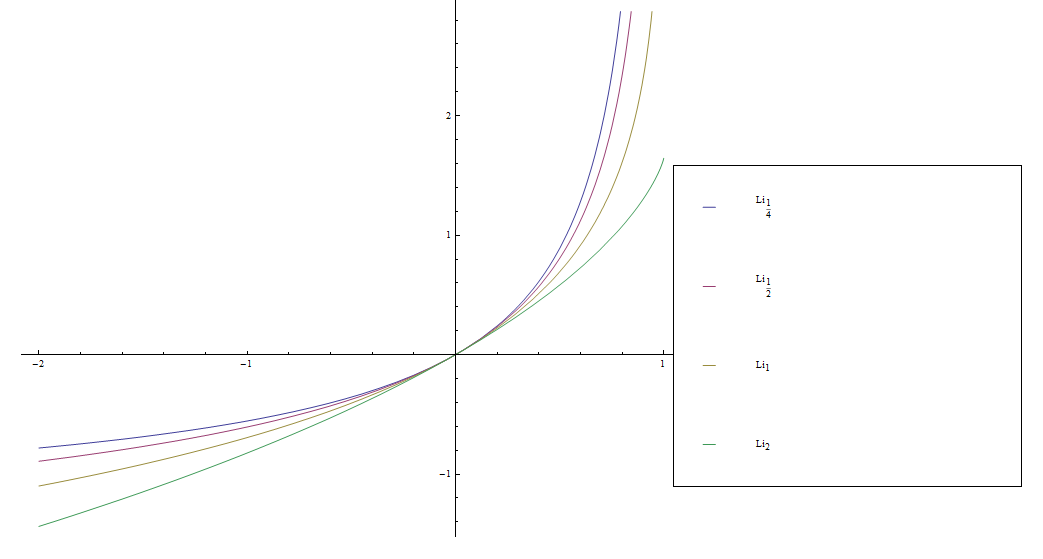Difference between revisions of "Polylogarithm"
From specialfunctionswiki
| Line 9: | Line 9: | ||
</gallery> | </gallery> | ||
</div> | </div> | ||
| + | |||
| + | =Properties= | ||
| + | [[Lerch transcendent polylogarithm]]<br /> | ||
| + | [[Legendre chi in terms of polylogarithm]]<br /> | ||
=Videos= | =Videos= | ||
[https://www.youtube.com/watch?v=6v60ivoC2z8 polylogarithm function] | [https://www.youtube.com/watch?v=6v60ivoC2z8 polylogarithm function] | ||
| − | = | + | =References= |
| − | |||
| − | |||
[[Category:SpecialFunction]] | [[Category:SpecialFunction]] | ||
Revision as of 04:23, 7 July 2016
The polylogarithm $\mathrm{Li}_s$ is defined by the formula for $|z|<1$ by $$\mathrm{Li}_s(z) = \sum_{k=1}^{\infty} \dfrac{z^k}{k^s} = z + \dfrac{z^2}{2^s} + \dfrac{z^3}{3^s} + \ldots$$ A special case of the polylogarithm with $s=2$ is called a dilogarithm.
Properties
Lerch transcendent polylogarithm
Legendre chi in terms of polylogarithm
